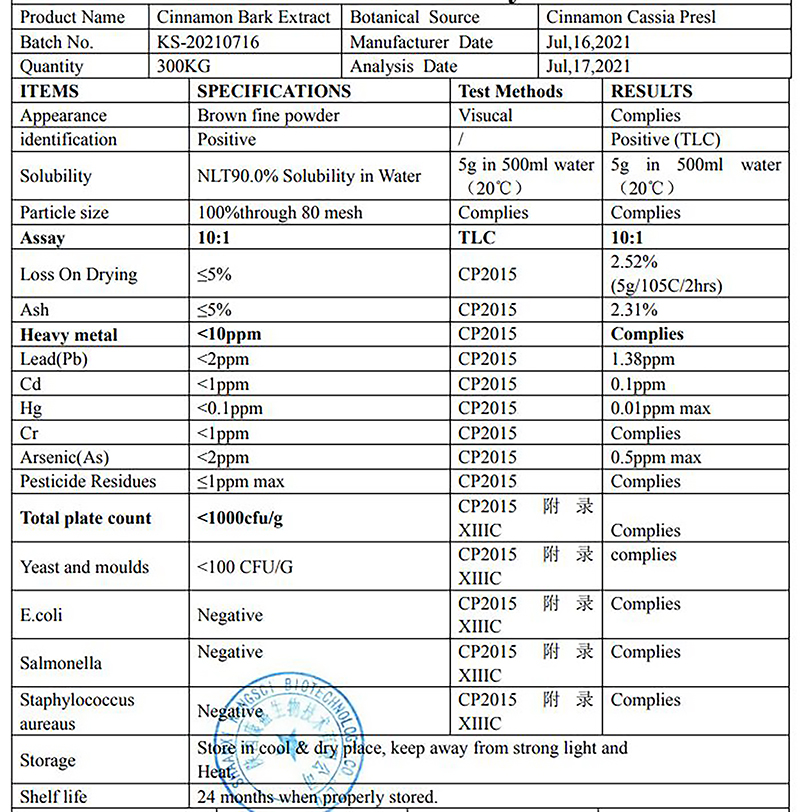
Part Used: Bark
Specification: 10:1
Test Method: TLC
Appearance: Brown Fine Powder
Active Ingredients: Cinnamaldehyde, Polyphenol
Certificate: ISO, HACCP, KOSHER, FDA
There are two types of cinnamon available in the market, both of which can be used to process cinnamon extract. And KS Nutripharma Cinnamon extract is extracted from Cassia Cinnamon.
* Cassia Cinnamon
Imported from China, India, Vietnam, and Indonesia, Cassia cinnamon is what you would normally find in the market. It is a piece of hard bark harvested from the cinnamon tree, which is then rolled or ground and has a deep reddish-brown color.
* Ceylon Cinnamon
Imported from Sri Lanka and Madagascar, Ceylon cinnamon is mostly found in Europe and Mexico, although it has started to make its way into the US. Harvested from the delicate bark of the interior of the cinnamon tree, Ceylon has a sweet, floral aroma and is light brown in color.

1. Antioxidant Effects
Numerous health advantages of cinnamon bark are related to its high antioxidant properties. Antioxidants are substances that shield living cells from the harm caused by free radicals, which are highly reactive oxygen molecules created as a result of stress, poor diet, pollution, and cigarette smoke. A 2009 article in the “Journal of the American College of Nutrition” showed that taking cinnamon supplements reduced the amount of free radical damage experienced by overweight adults. As antioxidants may aid in the prevention of cancer and cardiovascular disease by thwarting the effects of free radicals.
2. Diabetes Management
In naturopathy, cinnamon is used to treat type 2 diabetes, which is a potentially serious medical condition that can result in dangerously high blood sugar levels. A study found that taking 1 to 6 grams of cinnamon daily can lower blood sugar levels. This is due to cinnamon’s special flavanol polyphenol antioxidant, which can enhance insulin’s ability to stabilize blood sugar levels and lessen insulin resistance.
3. Cholesterol Reduction
According to the American Diabetes Association, cinnamon helped diabetes patients lower their cholesterol and triglyceride levels, whereas a placebo had no such effects. The same study in “Diabetes Care” that demonstrated the effects of cinnamon on blood sugar also demonstrated that using cinnamon decreased triglycerides by 30%, LDL or bad cholesterol by 27%, and total cholesterol by 26%.
Its storage conditions determine how long cinnamon extract lasts, with properly stored it maintains its peak quality for about three to four years. 24 months is the recommended shelf life. The best place to keep the product is somewhere cool, dry, and dark that is out of direct sunlight.
Despite coming from the same source, cinnamon oil and extract powder are two distinct substances. Directly extracted from the cinnamon tree’s bark, cinnamon oil is extremely concentrated and roughly four times as potent as extract powder. Cinnamon extract, which is far less strong than cinnamon oil but much simpler to use in cooking, is produced by dissolving cinnamon sticks in an alcohol solution. As flavorings, it is utilized both as an oil and an extract. While cinnamon oil works best for producing candies, extract powder is utilized in cakes, pastries, pies, and ice creams.

